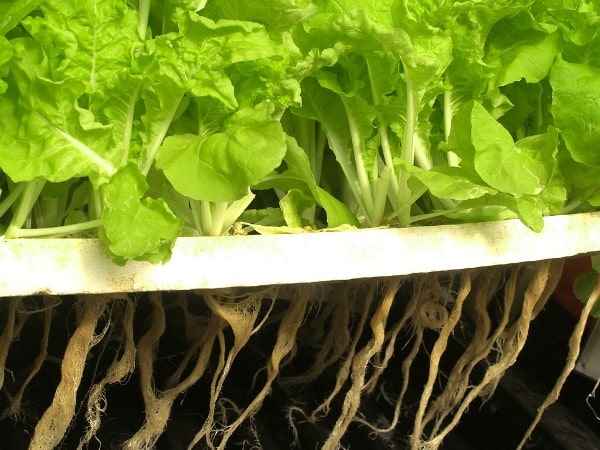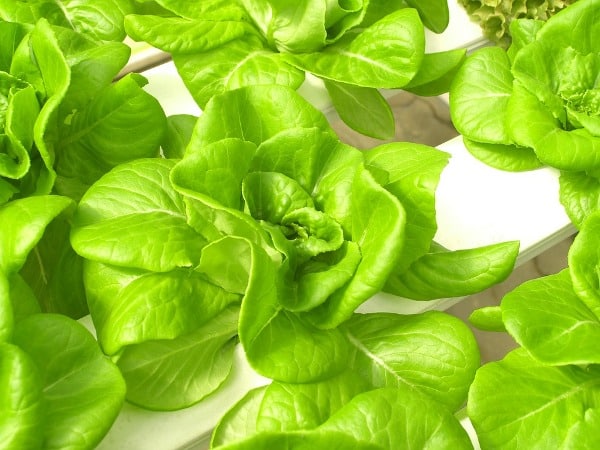Introduction to Hydroponic Lettuce Farming:
Today let us discuss Hydroponic Lettuce Farming In Greenhouse.
Introduction to Hydroponic system:
As the world population continues to grow at a rapid rate and at the same time the food production must be increased. However, approximately 38.6% of the ice-free land and 70% of freshwater is already devoted to agriculture. Predictable or current modern horticulture has been characterized by the act of developing yields in the soil, in the air, with the water system and the dynamic use of supplements, pesticides, and herbicides. Alternate effects of regular agribusiness incorporate the high and excess utilization of water, substantial land prerequisites, different supplements and pesticides in the surplus and soil degradation followed by disintegration. The other impacts of conventional agriculture include the high and adequate utilization of water, huge land necessities, high convergences of supplements and pesticides in overflow and soil disintegration.
Hydroponics is a subset of hydroculture. Lettuce is one of the most commonly grown hydroponic vegetable. The botanical name of Lettuce is Lactuca sativa. It is a method of budding plants without soil. Plants may be grown in a nutrient solution only called liquid culture or they may be supported by an inert medium called the aggregate culture. In both the systems, all the plants’ nutritional needs are to be supplied. Basically, the fundamental importance of hydroponic Lettuce production depends on the physical components of both the germination area and the pond area. It is important to have an idea of the physical components associated with each other and also a good understanding of their purposes.

It is a highly demanding system that requires a huge production knowledge, experience, technical skill and financial investment than many other greenhouse systems. A grower must be committed to meet the daily demands of production to be successful. There are a number of different hydroponic systems that have been commercially successful in Lettuce production.
Production of Hydroponic Lettuce:
The production of Hydroponics requires greenhouses with the ability to provide adequate heat in winter months and either shading or chilling of water in the summer months. Well, or county water is always used for hydroponic Lettuce production as surface water may increase the risk for diseases. The water should be tested before using for Lettuce production. This facility includes a germination area for seedling production. It is a part of the greenhouse with benches and artificial lighting (cool white fluorescent or high-pressure sodium lamps).
Cultivar and plant selection in Hydroponic Lettuce Farming:
The most common types of Lettuce are Loose-leaf, Butterhead, and Romain. In addition to this, Spinach and Swiss chard are used in Lettuce selection.
Selection of plants based on the following:
- Particularly developed for greenhouse hydroponics.
- Resistance to disease.
- Good
- Varieties can be selected for cool and low light winter conditions or warmer season cropping.
- Resistance to physiological disorders, bolting, and tip-burn in spring and summer.
Germination
The first 11 days of Lettuce production take place in the seedling production area. Under constant lighting conditions and with specific and closely controlled temperatures, relative humidity, carbon dioxide, and irrigation, best seedlings have been developed. In a controlled area, these conditions have been met, whether it is a growth room or a greenhouse with the following equipment.
Equipment of Hydroponic system:
Ebb and Flood Benches, Tables or Pond Solution Tanks, Plumbing Supplemental Lighting, Aspirated Sensor Box and Sensors.
Seeds can be placed into plug trays. Rockwool or oasis cubes (inert media) can also be used to produce transplants. The Rockwool cubes are hydrated and stabilize at pH 5.5-5.8 prior to seeding. Temperature ranges 64-68°F approximately for germination. Lettuce requires light at low radiation levels for germination.
When moisture is added, the selected seed will split open, allowing light to fall on it. Or else, cover the seed lightly with vermiculite.
Sub-irrigation is required for germinating seeds using an ebb and flow bench. When sub-irrigating, the irrigation water plus fertilizer is periodically pumped on to the ebb and flow bench and then drained away after a particular period. Rapid germination of strong and healthy transplants includes high humidity, light source, and temperature control. Germination is reduced with high temperature. Before transplanting, the seedlings are allowed to grow for two to three weeks.
Production systems of Hydroponic Lettuce:

The production of plants in artificial soil or soilless mixes commonly used in greenhouse or nursery production, including the tobacco float Ebb and flow benches used for seedling propagation.
Most commonly used techniques are nutrient film technique (NFT) or the floating raft method.
Hydroponic Lettuce is the best example of both in the closed systems. The closed systems are one in which surplus nutrient solution is recovered after use and then recycled through the system. It requires monitoring and adjusting the solution so that depleted nutrients can be replenished and the solution sterilized prior to circulating through the system again. In contrast, the nutrient solution in an open system is not recovered or recycled.
Nutrient Film Technique (NFT) in Hydroponic Lettuce Farming:
Along the side of the plastic pipe, plants are placed in the holes, so that roots extended inside. The channel length should not exceed 12 feet approximately. Throughout the length of bare roots, the nutrient solution constantly flows. The nutrient solution is introduced to the head of the pipes where it flows by gravity to the lower end, is collected, and re-circulated.
You may also like Frequently Asked Questions About Vegetable Farming.
Nutrient solutions:
The nutrient solutions are readily available in the market or can buy the solutions and can be prepared according to the given formulae. Generally, two tanks are required, one for calcium nitrate supply and the other for remaining nutrients. These are injected into the irrigation line. The soil lost the buffering capacity, thus changes the pH during production. The pH, oxygen levels, soluble salts, and temperature need to be recovered as well as recycled.
Pond Area
It includes the following:
- Pond Size: The Lettuce plants are grown in the pond area for 21 days if it covers the pond area for the production of 1245 heads per day, 660 m2 growing areas is required approximately.
- Pond Solution: To achieve an EC of 1200 µS/cm, equal portions of stock solutions are added to reverse osmosis.
Construction: There are three main options for pond construction.
- The sunken pond in the greenhouse and the pond surface above the floor.
- On the top of the greenhouse, Pond with concrete or wooden walls can be constructed.
- To lessen the amount of bending when working with the crop, the pond can be built on an island, so that water level is closer to waist level.
Designing: Plant spacing also called re-spacing is designed in the pond area. To facilitate this, multiple ponds should be run in parallel. The plants that are grown in one pond have been moved to another pond where they will be grown in two weeks.
Lighting in Hydroponic Lettuce Farming:
Pond growing area needs a uniform distribution of light. Supplements and natural light are recommended at the plant level. Some times HPS, High-Pressure Sodium lights which give high-intensity discharge are used for the supply of light. In recent times, Metal Halide Lamps have been used which helps more for plant growth. The software has also been developed to identify lamps needed and their placement for uniform light intensity. They give radiation, which is equal to natural light.
Paddle Fan: The paddle fan is used to propel air on the Lettuce plan. It increases plant transpiration.
System Component Information for Hydroponic Lettuce Farming:
- Dissolved Oxygen Sensor: Dissolved Oxygen Sensors are used to calculate dissolved oxygen levels.
- Computer Technology and Monitoring: To control the artificial environment, a control system has been set up. Greenhouse environment has been monitored by different sensors. These include air, temperature, nutrient solutions, humidity, and carbon dioxide concentration, intensities of natural and artificial lighting, dissolved oxygen levels, pH, the electrical conductivity of the nutrient solution. Heating, ventilation, and lighting can be activated by the signals given by the sensors.
Read: Terrace Gardening (Rooftop Gardening).
Biological Significance of Environmental Parameters in Hydroponic Lettuce Production:
- Temperature: The plant growth can be controlled by temperature. The optimum temperature has to be maintained for rapid and successful maturation. Water temperature and air should be controlled and supervised.
- Humidity: The transpiration rate of plants influences the relative humidity of plants. In some cases, diseases are caused by high humidity Carbon Dioxide. The growth of the plant influences the carbon dioxide concentration. More the concentration of carbon dioxide more is the speed of growth. Light measurements should be taken with a quantum sensor, which measures radiation Photosynthetically.
- Lights: Quantum sensors are used to measure light which in turn measures Photosynthetically Active Radiation.
- Dissolved Oxygen: DO (Dissolved Oxygen) dimensions give the available oxygen in the pond for the roots in the respiration. Approximately at 4 ppm, Lettuce will grow satisfactorily. In the absence of oxygen supply, the respiration process has been stopped and kills the plant. In this case, to re-circulate the system, pure oxygen has been added to the pond. Generally, these levels are maintained by adding air to solution through air pump and aquarium air stone.
- pH: The pH of the solution is important as it controls the accessibility of the fertilizer salts. The pH is maintained at 5.8 which is optimum for Lettuce growing. Nutrient deficiencies have been reported if pH alters.
Packaging and Post-Harvest Storage: After packing, Lettuce should be stored at 400 F.
Crop Health in Hydroponic Lettuce production:
- Disease: Prior planting, suitable chemicals can control crop diseases. The common disease which occurs in winter is powdery mildew.
Suggestions for the healthy greenhouse environment: To grow rapidly, the crop has been provided with light, nutrients and other environmental conditions at all times. Pond tanks have been cleaned with a bleach solution if root disease occurs. The equipment washed to resist the spread of disease. Algae that grow in the solution tank weakens the crop potential disease.
Pests: Shore flies, fungus gnats, thrips, and aphids generally occur with Lettuce production. The rapid growth of plants resists the development of pests. The production of pests develops in continuous crop production.
Control: Ventilation inlets have been used to control the pests.
Marketing:
Growers should identify the markets to pay a minimum price to realize cost economics and takes time to get maximum returns. The potential markets are schools, restaurant chefs, wholesale businessmen, and caterers.
Market Outlook of Hydroponic Lettuce:
Considering the health point of view, Americans demanding a variety of leafy green and herbs have been increased as they consume in their diet. Wholesale Lettuce production is dominating in western production regions. Different opportunities for hydroponic greens come from direct marketing to consumers generally. Proper handling and the other safety consideration have also been taken into account.
Economic Considerations of Hydroponic Lettuce:
It requires a specific start-up cost, labor, and management. The investment is needed in greenhouse construction, equipment, purchase of seed, production cost initially. The production may vary by operation and market as they have variations in the size of greenhouse, material construction, packaging, and marketing. The producers fix up specific budgets, according to the situation.
You may be interested in Growing Hydroponic Cauliflower.